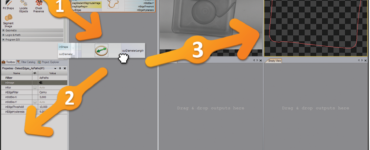Do you have a fur baby?
If you have a new furry pal, there’s nothing more important than knowing how to care for them.
There are some instances when your pet may be in distress. Knowing puppy CPR could save your furry friend’s life.
Understanding pet CPR is essential for pet owners. Knowing how to maintain the health of your pet can help you take care of them during times of emergency.
Fortunately, we’ve got you covered. Read on as we go over how to perform puppy CPR.
Assess the Situation
Before jumping into pet CPR, the first step is to assess the situation carefully. Make sure it’s safe for you and the puppy. If there’s any immediate danger, like traffic or aggressive animals, ensure that it’s under control or move the puppy to a safer place.
Next, gently tap the puppy and call its name. If there’s no response, check for breathing by placing your hand on its chest. Look for chest movement and listen for breath sounds.
Also, check if there’s a pulse by feeling for a heartbeat. If there’s no breathing or pulse, it’s time to start CPR.
Give Rescue Breaths
To start puppy CPR, lay the puppy on its right side on a flat surface. Tilt the head slightly back to open the airway. Cover the puppy’s mouth and nose with your mouth, creating a seal.
Blow gently into the puppy’s nose until you see its chest rise. Be careful not to blow too hard to avoid damaging the puppy’s lungs.
After giving two rescue breaths, check for a pulse again. If there’s still no pulse, it’s time to move on to chest compressions.
Perform Chest Compressions
Chest compressions help circulate oxygen-rich blood to vital organs. Place your hands over the puppy’s ribcage, just behind the front legs.
Use your palm to press down gently but firmly. The depth of compressions should be about one-third of the chest’s width.
Perform 30 chest compressions at a rate of about 100-120 compressions per minute. After 30 compressions, give two more rescue breaths. Continue with this cycle followed by two rescue breaths until the puppy starts breathing or you see signs of improvement.
If you are not confident with your skills, there are some certifications that you can get. You can visit websites like MyCPR NOW to know more.
Monitor and Reassess
While performing CPR for dogs, it’s crucial to keep a close eye on their condition. After a few cycles of CPR, check for a pulse and signs of breathing. If the puppy’s pulse returns or it starts breathing, stop CPR immediately and seek veterinary care.
If there’s still no improvement, continue CPR until you reach a veterinary clinic or professional help arrives. Remember to keep your composure and remain calm during the process.
Learn to Perform Puppy CPR Today
Puppy CPR is a valuable skill to learn that could potentially help save a beloved pet should the worst happen. Taking the time to master the various techniques, could be the difference between life and death. Act today, and start learning how to save a puppy if needed.
Now that you’ve learned how to perform CPR on a puppy, what’s next? Check out the rest of our site for more helpful guides and informative tips.










